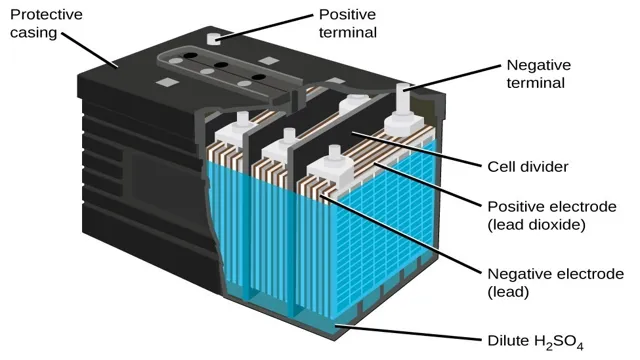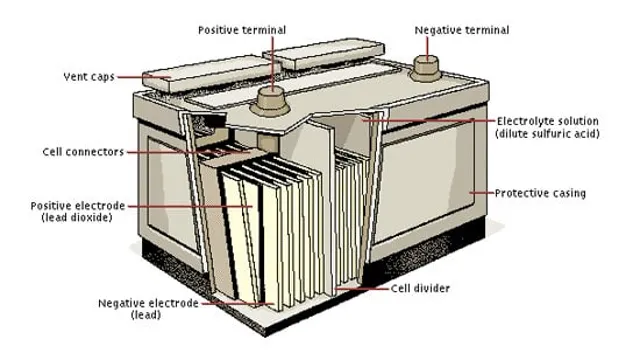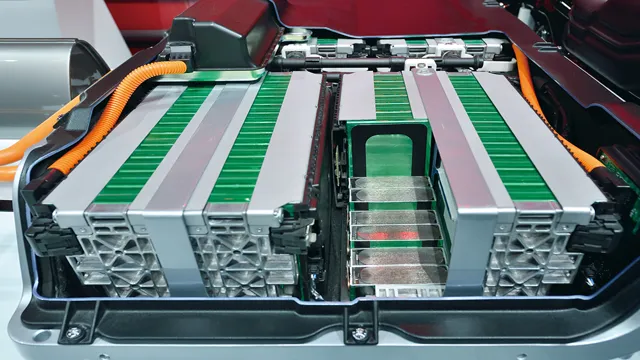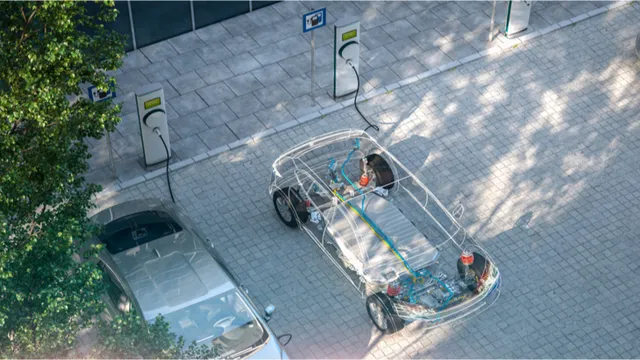Revitalize Your Electric Car with Lead Acid Batteries: A Complete Guide
Have you ever thought about switching to an electric car but were hesitant because of the battery? Lead-acid batteries have been the most commonly used batteries in electric vehicles for decades due to their affordability and durability. However, with the rise of new battery technology, many wonder if lead-acid batteries are still the best option for electric cars. In this blog, we’ll take a closer look at electric car lead-acid batteries, their advantages and disadvantages, and whether they are still a viable option for eco-conscious drivers.
So let’s buckle up and dive into the world of electric car batteries!
What is a lead acid battery?
An electric car lead-acid battery is a type of rechargeable battery commonly used in automobiles, backup power systems, and other applications. It consists of cells made of lead plates and lead oxide with a liquid electrolyte that produces chemical reactions to generate electricity. Lead-acid batteries are relatively inexpensive and have a high surge current capability, making them suitable for starting engines and powering accessories in vehicles.
However, they have a lower energy-to-weight ratio and a shorter lifespan than other types of rechargeable batteries. In electric cars, lead-acid batteries are not typically used as they are heavier, bulkier, and less efficient than lithium-ion batteries. Despite this, they are still prevalent in applications where cost and high-current output are more important than energy density and longevity.
Definition and basic principles
A lead-acid battery is a type of rechargeable battery that converts chemical energy into electrical energy. It is composed of lead plates and an electrolyte solution of sulfuric acid. The basic principle behind the functioning of a lead-acid battery is the transfer of electrons from one electrode to the other through the electrolyte.
The lead plates act as electrodes, and the sulfuric acid solution acts as the electrolyte. When the battery discharges, the lead plates react with the electrolyte to produce lead sulfate and water, releasing electrons. When the battery recharges, the reverse reaction takes place, converting lead sulfate back to lead plates and electrolyte solution.
One of the main advantages of a lead-acid battery is that it is relatively inexpensive and widely available. It is commonly used in automotive and standby power applications. However, it requires periodic maintenance to ensure optimal performance, and it also has a limited lifespan due to its chemistry.

How it works
A lead acid battery is a type of rechargeable battery that consists of lead and lead oxide plates submerged in an electrolyte solution made of sulfuric acid and water. When the battery discharges, the lead and lead oxide plates react with the sulfuric acid to produce lead sulfate and water. Meanwhile, electrons flow from the negative terminal to the positive terminal, creating an electrical current that powers devices or vehicles.
When the battery is charged, the process is reversed, and the lead sulfate is converted back into lead and lead oxide plates, and the water is returned to the electrolyte solution. Lead acid batteries are commonly used in automobiles, golf carts, boats, and backup power supplies due to their high energy density, low cost, and reliable performance.
Advantages of a lead acid battery
Electric car manufacturers have started using lead acid batteries to power their vehicles. Lead acid batteries offer various advantages when compared to other battery types. Firstly, lead acid batteries are relatively inexpensive, which makes them more accessible for mass production.
Secondly, they can handle high peak loads and deliver full power when required. Moreover, they have a longer lifespan than lithium-ion batteries, which makes them a better investment in the long run. While lead acid batteries are heavy and their energy density is lower compared to other battery types, their advantages outweigh these limitations when used in electric vehicles.
In conclusion, electric car lead acid batteries are a reliable and cost-effective solution for powering electric vehicles, proving that the older technology can still play a crucial role in the modern world.
High energy density
One advantage of lead acid batteries is their high energy density, which means they can store a lot of energy in a small space. This makes them a popular choice for applications where space is limited, such as in cars or boats. They are also affordable and easy to maintain, making them a practical choice for a wide range of uses.
Additionally, lead acid batteries have a relatively long lifespan, with some models lasting up to 10 years or more. This makes them a reliable choice for applications where consistent power is important. Overall, the high energy density and other advantages of lead acid batteries make them a versatile and widely used power source.
Reliable and safe
A lead-acid battery is a reliable and safe choice when it comes to storing energy. This type of battery has been around for over 150 years, proving its worth as a trusted energy storage system. One of the key benefits of a lead acid battery is its ability to provide a large amount of power in a short period of time, making it ideal for starting an engine or powering a car’s lights and radio.
It’s also a safe choice, as lead-acid batteries are very stable and not prone to explosions or fires, unlike some other types of batteries. Additionally, lead-acid batteries are highly recyclable, making them a sustainable choice for those who are environmentally conscious. Overall, a lead-acid battery is a reliable and safe option for any energy storage needs, whether it be for a car, boat, or even a backup power source for the home.
Cost-effective
When it comes to energy storage, lead acid batteries have been a popular and cost-effective option for decades. One of the biggest advantages of a lead acid battery is its low cost per unit of energy compared to other types of batteries. These batteries are widely available and can be found at a variety of price points, making them an accessible choice for many consumers.
Additionally, lead acid batteries are known for their durability, often lasting longer than other types of batteries and requiring minimal maintenance. They are also easy to install and use, making them a hassle-free choice for anyone in need of a reliable energy source. While there are newer and more advanced battery technologies available, lead acid batteries are still a popular choice due to their affordability and dependability.
The role of lead acid batteries in electric cars
When discussing the role of lead acid batteries in electric cars, it is important to note that while they are not typically found in modern electric vehicles, they were utilized in early models. One reason for their decline in use is their weight and bulkiness compared to newer battery technologies such as lithium-ion. Despite this, lead acid batteries are still used in some hybrid vehicles, providing a cost-effective and reliable solution for their energy needs.
While there are drawbacks to using lead acid batteries, such as their lower energy density and shorter lifespan, they remain a viable option for certain vehicles in certain situations. As the technology continues to evolve, it will be interesting to see if the role of lead acid batteries in electric cars changes over time.
Why they are used
Lead acid batteries have been used in electric cars for years due to their ability to store large amounts of energy and provide reliable power for the vehicle to run. They are known for their affordability, durability, and efficiency, making them a popular choice for electric car manufacturers. One of the main advantages of lead acid batteries is their ability to handle high currents, which is essential when powering electric motors that constantly require high levels of energy.
Additionally, lead acid batteries are easy to maintain and have a long lifespan, requiring minimal maintenance and repairs over time. While newer battery technologies like lithium-ion have emerged in recent years, lead acid batteries continue to play an important role in the development of electric cars. They remain a trusted and effective solution for powering these vehicles, making them a key component in the push to achieve a greener and more sustainable transportation industry.
Application in different types of electric cars
Lead acid batteries have played a significant role in the development of electric cars, particularly in hybrid and low-speed electric vehicles. While they may not offer the same energy density as lithium-ion batteries, lead acid batteries are known for their durability, low cost, and ability to handle deep cycles. These qualities make them an ideal choice for use in vehicles that run at slow speeds and short distances, such as golf carts, electric wheelchairs, and delivery trucks.
In addition, lead acid batteries have a relatively simple production process and are readily available, making them a popular choice for electric car manufacturers looking to reduce costs. However, as electric cars continue to evolve and require a greater range and faster charging times, lithium-ion batteries are increasingly becoming the preferred choice. Nonetheless, lead acid batteries remain a viable option for certain types of electric vehicles and are expected to continue to play a role in the industry for years to come.
Conclusion
In conclusion, the lead acid battery is the unsung hero of the electric car world. While it may not have the fame and glamour of its lithium-ion and solid-state counterparts, the lead acid battery continues to power electric vehicles around the world. And like any good hero, it does so with reliability, efficiency, and a determination to keep moving forward.
So the next time you’re zooming down the road in your electric car, take a moment to appreciate the underestimated power of the trusty lead acid battery.”
FAQs
What is an electric car lead acid battery?
An electric car lead acid battery is a type of rechargeable battery that is commonly used in electric vehicles.
How does an electric car lead acid battery work?
An electric car lead acid battery works by converting chemical energy into electrical energy, which can then be used to power an electric vehicle.
What are the advantages of using an electric car lead acid battery?
The advantages of using an electric car lead acid battery include being relatively inexpensive, having a high cycle life, and being widely available.
What are the disadvantages of using an electric car lead acid battery?
The disadvantages of using an electric car lead acid battery include limited capacity, being heavy and bulky, and having a shorter lifespan compared to other battery types like Lithium-ion.




